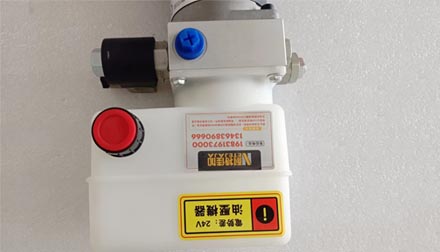Jul . 31, 2024 22:20 Back to list
Leading Manufacturers of Hydraulic and Pneumatic Cylinders for Industrial Automation and Equipment Solutions
Understanding Hydraulic and Pneumatic Cylinder Manufacturers
In various industrial applications, hydraulic and pneumatic cylinders play a vital role in the movement and control of machinery. As manufacturers strive to meet the growing demand for efficient and reliable systems, understanding the nuances of hydraulic and pneumatic cylinder production becomes crucial.
Hydraulic Cylinders
Hydraulic cylinders are devices that convert hydraulic energy into mechanical energy. They are essential for creating linear motion and force in various applications, ranging from construction machinery to manufacturing equipment. The core component of a hydraulic cylinder is the cylinder barrel, which houses a piston that moves back and forth in response to fluid pressure. Manufacturers prioritize precision engineering and robust materials to withstand high pressures, ensuring durability and efficiency.
One of the key advantages of hydraulic cylinders is their ability to generate significant force in a relatively compact form. This capability makes them ideal for heavy-duty applications, such as lifting, pushing, or pulling loads in construction equipment like excavators and cranes. Leading manufacturers often focus on innovations in design and material science to enhance performance, such as employing high-strength steel and advanced sealing technologies that improve reliability and reduce maintenance needs.
Pneumatic Cylinders
On the other hand, pneumatic cylinders operate on compressed air, providing a different range of benefits suitable for various applications. These cylinders are widely used in manufacturing processes where speed and lightness are crucial. Pneumatic systems are often lighter and more straightforward than hydraulic systems, making them favorable for applications like automated assembly lines and packaging machinery.
Manufacturers producing pneumatic cylinders aim to ensure quick response times and high repeatability. The design often emphasizes simplicity and cost-effectiveness, which appeals to industries looking to optimize production processes. The lightweight nature of pneumatic cylinders also allows for flexible installation options and easier integration into existing systems.
hydraulic and pneumatic cylinder manufacturers

Common Considerations for Manufacturers
Manufacturers of both hydraulic and pneumatic cylinders face several challenges in the production process. Quality assurance is paramount, as even minute defects can lead to significant failures in high-pressure systems. As such, rigorous testing and adherence to international standards are typical practices among reputable manufacturers.
Moreover, with the increasing emphasis on sustainability, many companies are exploring options to reduce environmental impacts during production. This includes using eco-friendly materials and adopting energy-efficient practices in manufacturing processes.
In addition, customization is becoming a key differentiator in the market. Different industries may require specific configurations, sizes, and performance specifications. Manufacturers that can offer tailored solutions are positioned to thrive in a competitive landscape.
Future Trends
As technology advances, the future of hydraulic and pneumatic cylinders looks promising. The integration of smart technologies, including sensors and IoT connectivity, allows for real-time monitoring and predictive maintenance. Manufacturers are exploring these innovations to enhance the functionality and reliability of their products.
Furthermore, automation and robotics are driving significant changes in how these cylinders are utilized in various applications. The trend toward automation is leading to increasing demands for more sophisticated actuators, pushing manufacturers to innovate continuously.
In conclusion, hydraulic and pneumatic cylinder manufacturers play a crucial role in supporting a wide array of industries. By focusing on quality, customization, and embracing new technologies, these manufacturers can meet the evolving needs of modern applications while ensuring safety and efficiency. As industries continue to grow and transform, so too will the innovations in cylinder technology, paving the way for a more efficient future.
-
Fork Lift Power Units - Hebei Shenghan | Efficiency, Reliability
NewsJul.13,2025
-
1.5-Ton Turbocharged Cylinder-Hebei Shenghan|Hydraulic Solution,Energy Efficiency
NewsJul.13,2025
-
Auto Hoist Power Units-Hebei Shenghan|Efficiency&Industrial Lifting
NewsJul.13,2025
-
Double Acting Power Units-Hebei Shenghan|Hydraulic Solutions,Industrial Efficiency
NewsJul.13,2025
-
1.5 Ton Lifting Cylinder 70/82-40-290-535 - High-Performance Hydraulic Solution | Hebei Shenghan
NewsJul.13,2025
-
Fork Lift Power Units - Hebei Shenghan | Efficiency&Reliability
NewsJul.13,2025
